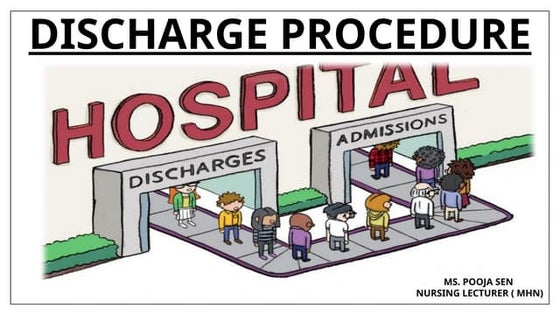Poetic devices
Download as PPTX, PDF0 likes63 views
The document discusses different types of figures of speech, including similes, metaphors, personification, alliteration, and onomatopoeia. A simile explicitly compares two things using like or as, while a metaphor implicitly compares two dissimilar things that share a quality. Personification gives human traits to non-human objects. Alliteration repeats initial consonant sounds for musical effect, and onomatopoeia imitates sounds. Figurative language is used in creative works to captivate readers and elicit emotions through imaginative language.
1 of 17
Download to read offline



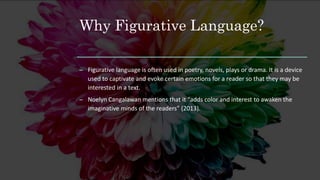




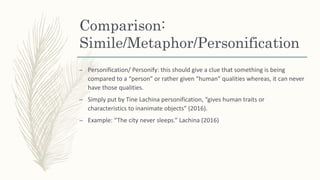








Recommended
What Is Poetry



What Is PoetryHolly McKinnon
Ėý
Poetry uses elements like figurative language, sound devices, rhythm, and style to convey moods and emotions through imagery and the expression of thoughts. It can take many forms through elements like similes, metaphors, personification, alliteration and more. Successful poems create pictures and feelings in the reader's mind through carefully chosen words.Personification power point



Personification power pointJasmineDreher
Ėý
you can try to guess and tell me what does that, mean to you guys tell me the comments
don't worry about the name on the ppt Image and text in art



Image and text in artAmelie van Moorsel-Orssich
Ėý
The document discusses various ways that image and text can be combined to communicate effectively. It provides examples of Egyptian hieroglyphics and Mayan glyphs that mix symbols and characters. Illuminated manuscripts also combined images and words. The combination of image and text can reinforce meaning and ensure the artist's intentions are clear. The order of image and text can also influence how information is interpreted. When used together, image and text provide an easy way to explain and help people remember information.Elements of poetry



Elements of poetrySaint John Westminster
Ėý
The document discusses the key elements of poetry, including form, sound, imagery, figurative language, and tone/speaker. Form refers to the structure and layout of the poem. Sound involves the use of rhyme, rhythm, repetition, and onomatopoeia. Imagery uses descriptive language to appeal to the senses. Figurative language involves the use of similes, metaphors, and personification. Tone/speaker refers to the attitude and perspective conveyed in the poem.POETIC DEVICE.pptx



POETIC DEVICE.pptxtamilselvi583122
Ėý
This document provides information about various poetic devices and literary techniques used in poetry. It begins by defining a poem and discussing its key characteristics including rhythmic patterns and the expression of ideas and emotions. It then outlines several common types of poems such as haiku, free verse, epics, ballads, and sonnets. The document proceeds to explain various poetic devices based on sounds including alliteration, rhyme, personification, puns, similes, and metaphors. It also covers devices related to meaning such as irony, oxymoron, and synecdoche. Finally, it discusses poetic elements like rhythm, stanzas, and poetic forms including ballads.Basic introductio to creative writing.



Basic introductio to creative writing.ThapeloDPhele
Ėý
In this short presentation, I explore poetic techniques and how they are creatively used to express emotions and thoughts.Basic introduction to creative writing.



Basic introduction to creative writing.ThapeloDanielPhele
Ėý
In this short presentstion, i explore poetic techqiniques and ways in which they are used to express thoughts and emotions.Why Drama Works



Why Drama WorksInstitute for Language Education
Ėý
This document summarizes Gary Carkin's presentation on why teaching English through drama works. It discusses Lev Vygotsky's model of how inner speech and subtext generate thoughts and feelings that lead to speech. This mirrors Konstantin Stanislavski's approach to acting. The document provides exercises to help students generate images and feelings from words to practice this process. It emphasizes defining character intentions, developing subtext, and using inner monologues to create "a film of visual images" that facilitate language acquisition through drama.Da same, da same Poetic devices G10 (1).pdf



Da same, da same Poetic devices G10 (1).pdfKeletso Moseamedi
Ėý
Poetic devices and figures of speech used in the poem "Da same, da same" by Sipho Sepamla for grade 10 English HL.Presentation (3).pptx on poetic devices.



Presentation (3).pptx on poetic devices.sethihimanshu700
Ėý
The student thanks their English teacher and principal for allowing them to complete a project on poetic devices. The project's objective is for students to learn about different types of poems and how to analyze them by identifying literary devices. The student's action plan was to choose the topic, collect information from their teacher and online, and submit the completed project. They conducted an interview where they discussed various poetic devices like simile, metaphor, imagery and rhyme scheme. The conclusion is that poetic devices add expression to poems.Imagery, Figures of Speech, Style and Criticism in Mac Flecknoe



Imagery, Figures of Speech, Style and Criticism in Mac FlecknoePema Chogyel
Ėý
1. Mac Flecknoe by John Dryden is a mock-epic or comic epic that satirizes Thomas Shadwell by portraying him as the dull "hero" who is crowned as the "king of dullness". 2. While critics argue Dryden was too harsh and unjust towards Shadwell, students see value in the poem for its artistic style. 3. Shadwell himself objected to being portrayed as the "dullest" and having an Irish name when he had no connection to Ireland.Stylistic devices



Stylistic devicesNavera Rahman
Ėý
The document discusses various literary devices and techniques used in writing. It defines stylistic devices as characteristics that make a text distinctive. It explains that writers use literary devices like figurative language and imagery to improve writing and make it more interesting. Some examples of literary devices provided include metaphor, simile, personification, and irony. The document also covers other concepts like tone, conflict, and forms of poetry like couplet and haiku.Recognizing The Details of Daily Experiences - by Grace Samboh & Syaiful Auli...



Recognizing The Details of Daily Experiences - by Grace Samboh & Syaiful Auli...Hyphen Hyphenation
Ėý
This was presented in the "Asian Contemporary Art Forum" at Taipei National University of Arts (26 September 2014) as part of the Kuandu Biennale 2014: Recognition System (held by Kuandu Museum of Modern and Fine Arts)A Figurative Language Analysis Of Song Lyric Mirrors By Justin Timberlake



A Figurative Language Analysis Of Song Lyric Mirrors By Justin TimberlakeAllison Thompson
Ėý
This document discusses a study analyzing the figurative language used in the song lyrics of "Mirrors" by Justin Timberlake. It begins with background information on poetry and figurative language. Figurative language is non-literal and includes metaphors, similes, symbols and more. The study aims to identify the types of figurative language in the song and their meanings. The analysis found the main types used were metaphor, personification, simile and symbol to emphasize points or express feelings.Figurative Languanges between Westlife and Linkin Park's songs



Figurative Languanges between Westlife and Linkin Park's songsJocareture Interprises
Ėý
This document provides background information on figurative language and its use in literary works. It discusses how language is used to influence others and convey ideas, feelings, and experiences. It defines figurative language as a means for authors and speakers to express themselves in indirect, non-literal ways to achieve satisfaction or elicit deeper emotional responses from readers or listeners. The document also examines semantics and meaning, noting that semantics is the study of meaning in language. It explores different theories about what constitutes meaning and how meaning is derived from words and symbols.B A II Year



B A II YearShri Shankaracharya College, Bhilai,Junwani
Ėý
This document discusses various figures of speech and poetic devices. It begins by defining a figure of speech as using words in a non-literal way to compare or describe things. It then discusses specific figures of speech like similes, metaphors, alliteration and ballads. For similes, it provides examples like "as thin as a rail" and explains they use "like" or "as" to compare two unlike things. For metaphors, no connective words are used. It also discusses alliteration through examples and its use of repeated initial sounds. Ballads are described as narrative poems often set to music with quatrain stanzas.Ba 2 year



Ba 2 yearShri Shankaracharya College, Bhilai,Junwani
Ėý
This document discusses various figures of speech and poetic devices. It begins by defining figures of speech as words or phrases that have meanings beyond their literal definitions. It then discusses specific figures of speech like similes, metaphors, alliteration and onomatopoeia. It provides examples and explanations of each. The document also covers poetic forms like ballads, epics, dramatic monologues and their key features.Figurative language commericals



Figurative language commericalsmcpage85
Ėý
The document provides information and examples about different types of figurative language including similes, metaphors, hyperboles, personification, alliteration, onomatopoeia and imagery. It includes instructions for making a figurative language flip chart and examples of identifying different types of figurative language in sentences. Examples of figurative language used in poems, stories, music and advertisements are also provided.Basic literary devices (part 1)



Basic literary devices (part 1)Manpreet Kaur
Ėý
The document discusses various literary devices such as simile, metaphor, personification, alliteration, and assonance. It provides examples and definitions for each device. Similes use "like" or "as" to compare two unlike things, while metaphors directly state a comparison. Personification gives human traits to non-human things. Alliteration repeats consonant sounds, and assonance repeats vowel sounds within words or phrases. The document aims to explain these common literary techniques used in poetry and prose.My Metaphor Essay



My Metaphor EssayBuy A Philosophy Paper Alabama State University
Ėý
The document discusses metaphors and their importance in language and expression. It argues that metaphor is essential for expressing deep emotions and is a fundamental part of human language and communication. Metaphor allows poets and musicians in particular to beautifully convey emotional experiences. The document also reflects on the nature of poetry as a language for dreams and emotions and explores how metaphor functions in poems, including how they can reveal deeper meanings or mysteries in a text.The Language of Disney Songs: A Formalistic Analysis 



The Language of Disney Songs: A Formalistic Analysis The Annual International Conference on Languages, Linguistics, Translation and Literature
Ėý
The Language of Disney Songs: A Formalistic Analysis
Klein Mamayabay, LPT, MAED,
St. Mary's College of Tagum, Inc., Philippines
The Seventh International Conference on Languages, Linguistics, Translation and Literature
11-12 June 2022 , Ahwaz
For more information, please visit the conference website:
WWW.LLLD.IR
Figures of speech



Figures of speechMasego Mphethe
Ėý
figures of speech. literature and language. english. english lesson. figures of speech in the english language. metaphor. simile. Figures of Speech



Figures of SpeechDupingLoves2Share
Ėý
This document provides an overview of various figures of speech including simile, metaphor, onomatopoeia, metonymy, synecdoche, oxymoron, paradox, understatement, irony (verbal, situational, dramatic), allusion, apostrophe, alliteration, assonance, pun, euphemism, anaphora, and antithesis. It also outlines a task for students to create a compendium covering 15 different figures of speech through posters, advertisements, poetry, and other examples along with a reflection on what was learned. Students are instructed to research additional figures of speech for an upcoming quiz.Eng421 ch02 Creative writing 



Eng421 ch02 Creative writing Mendy Seldowitz
Ėý
This document discusses the importance of using imagery in creative writing. It begins by providing examples of non-imaginative statements and how adding sensory details through imagery brings those statements to life. It explains that imagery appeals to the five senses and allows readers to visualize what is being described. The document then discusses how imagery works on a physiological level in the brain to elicit an emotional response from readers. It emphasizes that while abstractions, generalizations and judgments are important for communication, vivid imagery is what makes writing come alive by engaging the senses. A single descriptive sentence from Margaret Atwood is used as an example of how imagery can efficiently portray multiple senses and ideas with just a few words.Interactional socio & training



Interactional socio & trainingAnna Trester
Ėý
Dr. Anna Marie Trester and Sonia Checchia from Georgetown University's Linguistics Department discuss sociolinguistics and its application to cross-cultural training. They explain key concepts from interactional sociolinguistics like contextualization cues, speech acts, discourse markers and referencing expressions that can enhance understanding of language and social interaction. The presentation demonstrates these concepts and how they reveal cultural assumptions. It aims to add analytical tools to help recognize how power and perspective are communicated through language.ASP.NET Web API Interview Questions By Scholarhat



ASP.NET Web API Interview Questions By ScholarhatScholarhat
Ėý
ASP.NET Web API Interview Questions By ScholarhatHow to Configure Recurring Revenue in Odoo 17 CRM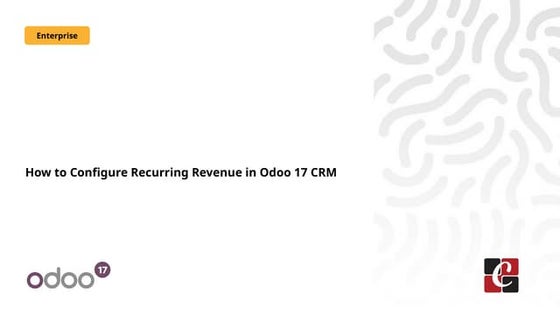



How to Configure Recurring Revenue in Odoo 17 CRMCeline George
Ėý
This slide will represent how to configure Recurring revenue. Recurring revenue are the income generated at a particular interval. Typically, the interval can be monthly, yearly, or we can customize the intervals for a product or service based on its subscription or contract. More Related Content
Similar to Poetic devices (19)
Why Drama Works



Why Drama WorksInstitute for Language Education
Ėý
This document summarizes Gary Carkin's presentation on why teaching English through drama works. It discusses Lev Vygotsky's model of how inner speech and subtext generate thoughts and feelings that lead to speech. This mirrors Konstantin Stanislavski's approach to acting. The document provides exercises to help students generate images and feelings from words to practice this process. It emphasizes defining character intentions, developing subtext, and using inner monologues to create "a film of visual images" that facilitate language acquisition through drama.Da same, da same Poetic devices G10 (1).pdf



Da same, da same Poetic devices G10 (1).pdfKeletso Moseamedi
Ėý
Poetic devices and figures of speech used in the poem "Da same, da same" by Sipho Sepamla for grade 10 English HL.Presentation (3).pptx on poetic devices.



Presentation (3).pptx on poetic devices.sethihimanshu700
Ėý
The student thanks their English teacher and principal for allowing them to complete a project on poetic devices. The project's objective is for students to learn about different types of poems and how to analyze them by identifying literary devices. The student's action plan was to choose the topic, collect information from their teacher and online, and submit the completed project. They conducted an interview where they discussed various poetic devices like simile, metaphor, imagery and rhyme scheme. The conclusion is that poetic devices add expression to poems.Imagery, Figures of Speech, Style and Criticism in Mac Flecknoe



Imagery, Figures of Speech, Style and Criticism in Mac FlecknoePema Chogyel
Ėý
1. Mac Flecknoe by John Dryden is a mock-epic or comic epic that satirizes Thomas Shadwell by portraying him as the dull "hero" who is crowned as the "king of dullness". 2. While critics argue Dryden was too harsh and unjust towards Shadwell, students see value in the poem for its artistic style. 3. Shadwell himself objected to being portrayed as the "dullest" and having an Irish name when he had no connection to Ireland.Stylistic devices



Stylistic devicesNavera Rahman
Ėý
The document discusses various literary devices and techniques used in writing. It defines stylistic devices as characteristics that make a text distinctive. It explains that writers use literary devices like figurative language and imagery to improve writing and make it more interesting. Some examples of literary devices provided include metaphor, simile, personification, and irony. The document also covers other concepts like tone, conflict, and forms of poetry like couplet and haiku.Recognizing The Details of Daily Experiences - by Grace Samboh & Syaiful Auli...



Recognizing The Details of Daily Experiences - by Grace Samboh & Syaiful Auli...Hyphen Hyphenation
Ėý
This was presented in the "Asian Contemporary Art Forum" at Taipei National University of Arts (26 September 2014) as part of the Kuandu Biennale 2014: Recognition System (held by Kuandu Museum of Modern and Fine Arts)A Figurative Language Analysis Of Song Lyric Mirrors By Justin Timberlake



A Figurative Language Analysis Of Song Lyric Mirrors By Justin TimberlakeAllison Thompson
Ėý
This document discusses a study analyzing the figurative language used in the song lyrics of "Mirrors" by Justin Timberlake. It begins with background information on poetry and figurative language. Figurative language is non-literal and includes metaphors, similes, symbols and more. The study aims to identify the types of figurative language in the song and their meanings. The analysis found the main types used were metaphor, personification, simile and symbol to emphasize points or express feelings.Figurative Languanges between Westlife and Linkin Park's songs



Figurative Languanges between Westlife and Linkin Park's songsJocareture Interprises
Ėý
This document provides background information on figurative language and its use in literary works. It discusses how language is used to influence others and convey ideas, feelings, and experiences. It defines figurative language as a means for authors and speakers to express themselves in indirect, non-literal ways to achieve satisfaction or elicit deeper emotional responses from readers or listeners. The document also examines semantics and meaning, noting that semantics is the study of meaning in language. It explores different theories about what constitutes meaning and how meaning is derived from words and symbols.B A II Year



B A II YearShri Shankaracharya College, Bhilai,Junwani
Ėý
This document discusses various figures of speech and poetic devices. It begins by defining a figure of speech as using words in a non-literal way to compare or describe things. It then discusses specific figures of speech like similes, metaphors, alliteration and ballads. For similes, it provides examples like "as thin as a rail" and explains they use "like" or "as" to compare two unlike things. For metaphors, no connective words are used. It also discusses alliteration through examples and its use of repeated initial sounds. Ballads are described as narrative poems often set to music with quatrain stanzas.Ba 2 year



Ba 2 yearShri Shankaracharya College, Bhilai,Junwani
Ėý
This document discusses various figures of speech and poetic devices. It begins by defining figures of speech as words or phrases that have meanings beyond their literal definitions. It then discusses specific figures of speech like similes, metaphors, alliteration and onomatopoeia. It provides examples and explanations of each. The document also covers poetic forms like ballads, epics, dramatic monologues and their key features.Figurative language commericals



Figurative language commericalsmcpage85
Ėý
The document provides information and examples about different types of figurative language including similes, metaphors, hyperboles, personification, alliteration, onomatopoeia and imagery. It includes instructions for making a figurative language flip chart and examples of identifying different types of figurative language in sentences. Examples of figurative language used in poems, stories, music and advertisements are also provided.Basic literary devices (part 1)



Basic literary devices (part 1)Manpreet Kaur
Ėý
The document discusses various literary devices such as simile, metaphor, personification, alliteration, and assonance. It provides examples and definitions for each device. Similes use "like" or "as" to compare two unlike things, while metaphors directly state a comparison. Personification gives human traits to non-human things. Alliteration repeats consonant sounds, and assonance repeats vowel sounds within words or phrases. The document aims to explain these common literary techniques used in poetry and prose.My Metaphor Essay



My Metaphor EssayBuy A Philosophy Paper Alabama State University
Ėý
The document discusses metaphors and their importance in language and expression. It argues that metaphor is essential for expressing deep emotions and is a fundamental part of human language and communication. Metaphor allows poets and musicians in particular to beautifully convey emotional experiences. The document also reflects on the nature of poetry as a language for dreams and emotions and explores how metaphor functions in poems, including how they can reveal deeper meanings or mysteries in a text.The Language of Disney Songs: A Formalistic Analysis 



The Language of Disney Songs: A Formalistic Analysis The Annual International Conference on Languages, Linguistics, Translation and Literature
Ėý
The Language of Disney Songs: A Formalistic Analysis
Klein Mamayabay, LPT, MAED,
St. Mary's College of Tagum, Inc., Philippines
The Seventh International Conference on Languages, Linguistics, Translation and Literature
11-12 June 2022 , Ahwaz
For more information, please visit the conference website:
WWW.LLLD.IR
Figures of speech



Figures of speechMasego Mphethe
Ėý
figures of speech. literature and language. english. english lesson. figures of speech in the english language. metaphor. simile. Figures of Speech



Figures of SpeechDupingLoves2Share
Ėý
This document provides an overview of various figures of speech including simile, metaphor, onomatopoeia, metonymy, synecdoche, oxymoron, paradox, understatement, irony (verbal, situational, dramatic), allusion, apostrophe, alliteration, assonance, pun, euphemism, anaphora, and antithesis. It also outlines a task for students to create a compendium covering 15 different figures of speech through posters, advertisements, poetry, and other examples along with a reflection on what was learned. Students are instructed to research additional figures of speech for an upcoming quiz.Eng421 ch02 Creative writing 



Eng421 ch02 Creative writing Mendy Seldowitz
Ėý
This document discusses the importance of using imagery in creative writing. It begins by providing examples of non-imaginative statements and how adding sensory details through imagery brings those statements to life. It explains that imagery appeals to the five senses and allows readers to visualize what is being described. The document then discusses how imagery works on a physiological level in the brain to elicit an emotional response from readers. It emphasizes that while abstractions, generalizations and judgments are important for communication, vivid imagery is what makes writing come alive by engaging the senses. A single descriptive sentence from Margaret Atwood is used as an example of how imagery can efficiently portray multiple senses and ideas with just a few words.Interactional socio & training



Interactional socio & trainingAnna Trester
Ėý
Dr. Anna Marie Trester and Sonia Checchia from Georgetown University's Linguistics Department discuss sociolinguistics and its application to cross-cultural training. They explain key concepts from interactional sociolinguistics like contextualization cues, speech acts, discourse markers and referencing expressions that can enhance understanding of language and social interaction. The presentation demonstrates these concepts and how they reveal cultural assumptions. It aims to add analytical tools to help recognize how power and perspective are communicated through language.Recognizing The Details of Daily Experiences - by Grace Samboh & Syaiful Auli...



Recognizing The Details of Daily Experiences - by Grace Samboh & Syaiful Auli...Hyphen Hyphenation
Ėý
The Language of Disney Songs: A Formalistic Analysis 



The Language of Disney Songs: A Formalistic Analysis The Annual International Conference on Languages, Linguistics, Translation and Literature
Ėý
Recently uploaded (20)
ASP.NET Web API Interview Questions By Scholarhat



ASP.NET Web API Interview Questions By ScholarhatScholarhat
Ėý
ASP.NET Web API Interview Questions By ScholarhatHow to Configure Recurring Revenue in Odoo 17 CRM



How to Configure Recurring Revenue in Odoo 17 CRMCeline George
Ėý
This slide will represent how to configure Recurring revenue. Recurring revenue are the income generated at a particular interval. Typically, the interval can be monthly, yearly, or we can customize the intervals for a product or service based on its subscription or contract. Entity Framework Interview Questions PDF By ScholarHat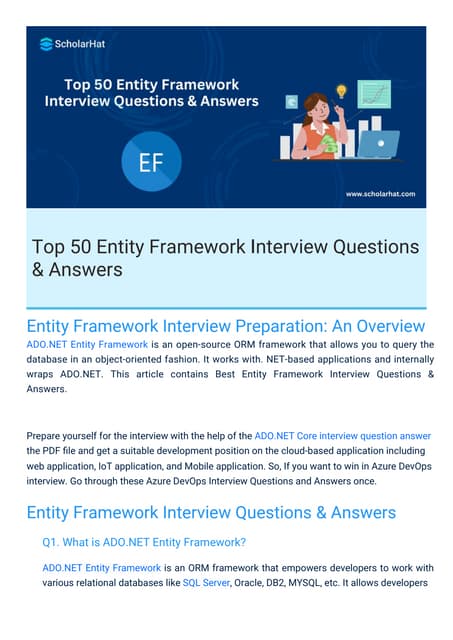



Entity Framework Interview Questions PDF By ScholarHatScholarhat
Ėý
Entity Framework Interview Questions PDF By ScholarHatBlind spots in AI and Formulation Science, IFPAC 2025.pdf



Blind spots in AI and Formulation Science, IFPAC 2025.pdfAjaz Hussain
Ėý
The intersection of AI and pharmaceutical formulation science highlights significant blind spotsâsystemic gaps in pharmaceutical development, regulatory oversight, quality assurance, and the ethical use of AIâthat could jeopardize patient safety and undermine public trust. To move forward effectively, we must address these normalized blind spots, which may arise from outdated assumptions, errors, gaps in previous knowledge, and biases in language or regulatory inertia. This is essential to ensure that AI and formulation science are developed as tools for patient-centered and ethical healthcare.Azure Administrator Interview Questions By ScholarHat



Azure Administrator Interview Questions By ScholarHatScholarhat
Ėý
Azure Administrator Interview Questions By ScholarHatAI and Academic Writing, Short Term Course in Academic Writing and Publicatio...



AI and Academic Writing, Short Term Course in Academic Writing and Publicatio...Prof. (Dr.) Vinod Kumar Kanvaria
Ėý
AI and Academic Writing, Short Term Course in Academic Writing and Publication, UGC-MMTTC, MANUU, 25/02/2025, Prof. (Dr.) Vinod Kumar Kanvaria, University of Delhi, vinodpr111@gmail.comInterim Guidelines for PMES-DM-17-2025-PPT.pptx



Interim Guidelines for PMES-DM-17-2025-PPT.pptxsirjeromemanansala
Ėý
This is the latest issuance on PMES as replacement of RPMS. Kindly message me to gain full access of the presentation. Helping Autistic Girls Shine Webinar šÝšÝßĢs



Helping Autistic Girls Shine Webinar šÝšÝßĢsPooky Knightsmith
Ėý
For more information about my speaking and training work, visit: https://www.pookyknightsmith.com/speaking/Intellectual Honesty & Research Integrity.pptx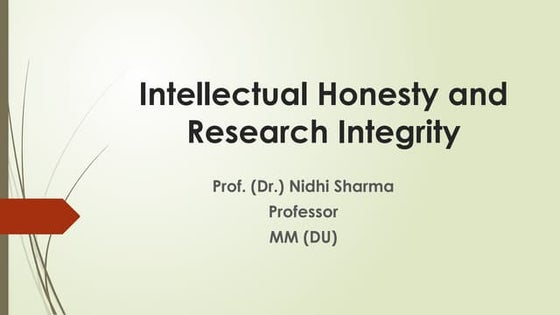



Intellectual Honesty & Research Integrity.pptxNidhiSharma495177
Ėý
Research Publication & Ethics contains a chapter on Intellectual Honesty and Research Integrity.
Different case studies of intellectual dishonesty and integrity were discussed.Azure Data Engineer Interview Questions By ScholarHat



Azure Data Engineer Interview Questions By ScholarHatScholarhat
Ėý
Azure Data Engineer Interview Questions By ScholarHatFunctional Muscle Testing of Facial Muscles.pdf



Functional Muscle Testing of Facial Muscles.pdfSamarHosni3
Ėý
Functional Muscle Testing of Facial Muscles.pdfYear 10 The Senior Phase Session 3 Term 1.pptx



Year 10 The Senior Phase Session 3 Term 1.pptxmansk2
Ėý
Year 10 The Senior Phase Session 3 Term 1.pptxRRB ALP CBT 2 RAC Question Paper MCQ (Railway Assistant Loco Pilot)



RRB ALP CBT 2 RAC Question Paper MCQ (Railway Assistant Loco Pilot)SONU HEETSON
Ėý
RRB ALP CBT 2 RAC Question Paper MCQ PDF Free Download. Railway Assistant Loco Pilot Mechanic Refrigeration and Air Conditioning Important Questions.How to Configure Proforma Invoice in Odoo 18 Sales



How to Configure Proforma Invoice in Odoo 18 SalesCeline George
Ėý
In this slide, weâll discuss on how to configure proforma invoice in Odoo 18 Sales module. A proforma invoice is a preliminary invoice that serves as a commercial document issued by a seller to a buyer.Administrative bodies( D and C Act, 1940



Administrative bodies( D and C Act, 1940P.N.DESHMUKH
Ėý
These presentation include information about administrative bodies such as D.T.A.B
CDL AND DCC, etc.Meeting the needs of modern students?, Selina McCoy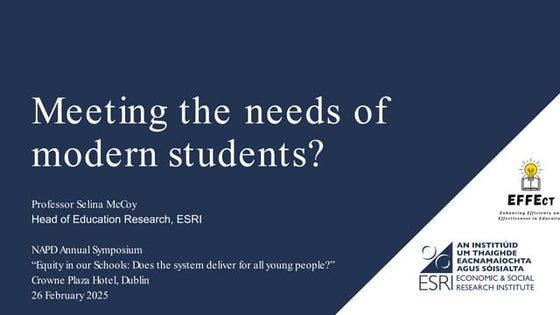



Meeting the needs of modern students?, Selina McCoyEconomic and Social Research Institute
Ėý
NAPD Annual Symposium
âEquity in our Schools: Does the system deliver for all young people?âAI and Academic Writing, Short Term Course in Academic Writing and Publicatio...



AI and Academic Writing, Short Term Course in Academic Writing and Publicatio...Prof. (Dr.) Vinod Kumar Kanvaria
Ėý
Poetic devices
- 1. Basics on Figures of Speech Prepared by: Mihlali Luningo
- 2. Figurative languages vs Literal Language â Literal language refers to the real meaning of something. â Literal language has no underlying meanings. So it means what it says. â According to Joey Valdriz literal is âthe actual. Dictionary meaning of a word; language that means what it appears to meanâ (2016). â Figurative language, therefore, has a further meaning than what meets the eye. â It tends to creates what Noelyn Cangalawan describes as âfiguresâ or rather âcreates pictures in the mind of a readerâ (2013).
- 4. Why Figurative Language? â Figurative language is often used in poetry, novels, plays or drama. It is a device used to captivate and evoke certain emotions for a reader so that they may be interested in a text. â Noelyn Cangalawan mentions that it âadds color and interest to awaken the imaginative minds of the readersâ (2013).
- 6. Comparison: Simile/Metaphor/Personification â Simile: key words âas/likeâ â âA description that uses as or like to make a comparisonâ, Divivia Ginete (2018). â Example: âthe muscles on his brawny arm are strong as iron bandsâ Cangalawan (2013). The strength of the muscle is compared to iron bands â Example: âKim ate her food like a vacuum cleanerâ Cangalawan (2013). The intensity of how Kim ate her food seemed as those a vacuum was cleaning.
- 7. Comparison: Simile/Metaphor/Personification â Metaphor: compares two things that are not alike yet have something in common. â Ginete states that a metaphor âis an implied comparison between two dissimilar things that have something in commonâ (2018). â It is often hard to identify a metaphor, hence one needs to understand that something is compared to something that have a quality in common. â As Joey Valdriz states âread in between the lines because not everything is as it appearsâ (2016).
- 8. âLaughter is the best medicineâ Laughter Medicine
- 9. Comparison: Simile/Metaphor/Personification â Personification/ Personify: this should give a clue that something is being compared to a âpersonâ or rather given âhumanâ qualities whereas, it can never have those qualities. â Simply put by Tine Lachina personification, âgives human traits or characteristics to inanimate objectsâ (2016). â Example: âThe city never sleeps.â Lachina (2016)
- 10. How can a city never sleep?
- 11. Sound: Alliteration/ Onomatopoeia â These two sound devices are often found in poetry as this brings a rhythm and flow in the poem. Makes poetry musical and enjoyable. â Alliteration âis the repetition of an initial consonant soundâ Ginete (2018). â Example: âThe big bad bear attacked all the little bunnies in the forestâ (2018) â The repetition of B creates a banging sound that creates suspense and fear of the bear that attacked the little bunnies.
- 12. Sound: Alliteration/ Onomatopoeia â Onomatopoeia is often used in poems and nursey books â âit is the use of words that imitate the sounds associated with the objects or actions they refer toâ (2018). â This creates musical effect and ensures the reader pays more attention to what is being said. â Example: âChug, chug, chug. Puff, puff, puff. Dingdong, ding-dong. The little train rumbled over the tracks.â Valdriz (2016).
- 14. Oxymoron â According to Lachina oxymoron is âcomposed of a pair of contradictory wordsâ (2016). â This often creates confusion to the reader to ensure they pay close attention to what is said and find the humor or the intended effect of the text. â Example: âWe laughed and cried through the tragic comedy.â â One would wonder how could one cry and laugh at the same time, furthermore, how can a comedy be tragic? Oxymoron picks on your brain and requires a mental exercise.
- 15. Why Figurative Language?? â To elicit interest â For entertainment â To pick your brain â And most importantly for ARTS SAKE!!
- 16. Reference List â Cangalawan, N. (2013). Go figure; Figures of Speech. Available from šÝšÝßĢShare at /noelyncagalawan/figures-of-speech-23193534 (Accessed 14 August 2020). â Ginete, D. (2018) Figures of Speech. Available from šÝšÝßĢShare at /DivinadelaPenaGinete/figures-of-speech-96660611 (Accessed on 14 August 2020). â Lachina, T. (2016). Eng9 Figures of Speech. Available from šÝšÝßĢShare at /tinelachica04/eng9-figures-of-speech (Accessed on 14 August 2020).
- 17. Reference List â Lerios, J.J. (2020). Figures of speech that shows comparison. Available from šÝšÝßĢShare at /JohnTitoLerios/figures-of-speech- 237738222 (Accessed on 14 August 2020). â Valdriz, J. (2016). Figures of Speech. Available from šÝšÝßĢShare at /joeyvaldriz/figures-of-speech-61688493 (Accessed on 14 August 16, 2020).






